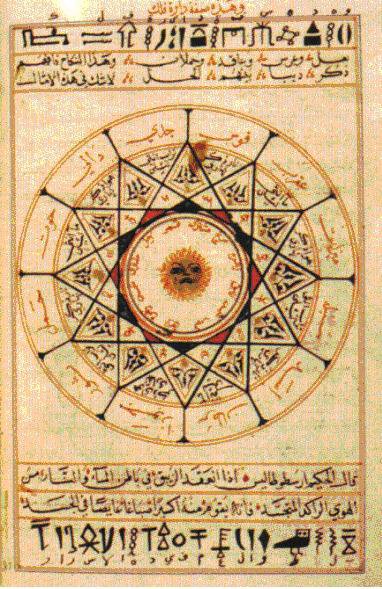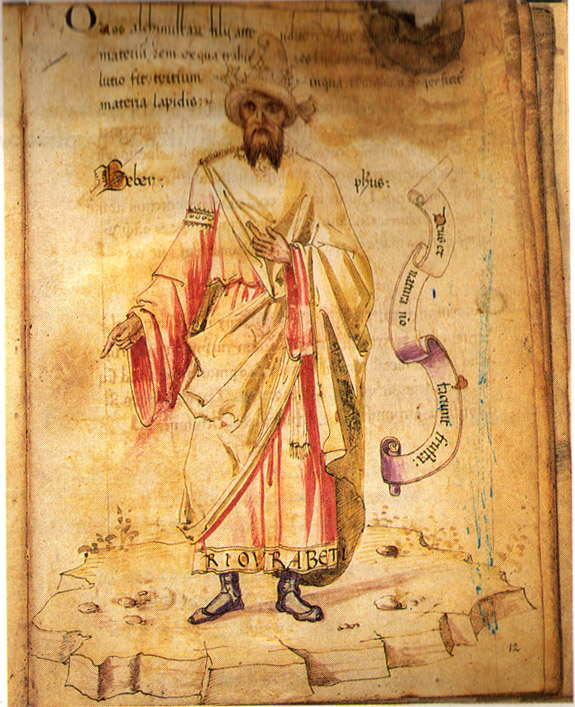‘As above, so below’ : The Mystics of Arabia by Meghna N. Desai
The Seven Principles of Hermes Hermes Trismegistus The Emerald Tablet via http://illuminatizeitgeist.tumblr.com
The methods of warfare have always laid ruin to the beliefs of men, their gods, the heroism of their leaders, and their systems of knowledge. Only then can they be led on newer path of beliefs, under a new leader, with no reminder of the previous kingship.
“The Egyptian city of Alexandria, was a meeting place for various philosophical, scientific and spiritual teachings. During the siege of Alexandria perpetrated by Julius Caesar in 47 BC, fire destroyed part of the first and most famous universal library housing a collection of 400,000 scrolls, including original written alchemical lore. Much of this knowledge, however, had already passed into Greek culture and was transmitted to Arabia with the spread of Islam.”- John Eberly, Al-Kimia: The Mystical Islamic Essence of the Sacred Art of Alchemy.
The earliest metals exploited by men were those that occurred in their native state. Metal working as an activity was completely dependent on the temple and led by its priest. Anything and everything that came of it was first offered to the gods, then to the priests, followed by the kings. By this time, metal had forged a long, intrinsic relationship with gods, magic, cults, and rituals that would continue for centuries to come. With increase in commerce, metal smelting, along with chemical substances like lapis lazuli, ‘Egyptian blue’, glazes and glass, became the well-guarded recipes and trade secrets of the ancient world. Various recipes mentioned the necessity of propitiating the bad spirits in order to prevent the inhibition of the process, and also a list of methods to conjure good spirits to overlook the smooth running of the recipe. Astrology and astral sciences were mandatory to predict the right planetary positions and time for executing the task. From demonic powers, necromancy, to pagan gods, from planetary positions to incantations, all were kept in the list of directives recorded to create a substance.
Philosophy, Folklore & Alchemy
By the sixth century BC, Greek science rose in Ionia. Whether ideas traveled from Syria or Crete, is uncertain. The Greeks isolated science and rational thought from mysticism and magic, which was shared by Rome and eventually revived during the Renaissance period.
In the later centuries, classical thought traveled from Greece to Byzantium,, and from Byzantium to Syria, into the Islamic world, and full circle full circle back into Europe,sometimes contesting religious reasoning, and at other times,, catalysing the belief of god. While knowledge and texts moved freely prior to the Middle Ages, a huge amount of time was spent translating the texts into local languages for further work to be carried out by local mystics and philosophers. For this purpose, translators were hired and students were engaged in copying the tablets and scrolls. Careful translation was required to build systematic thought and was important for establishing concepts of the Muslim faith religions, and and for increasing initiations into Islam, a strategy of state followed by the Abbasids.
Baghdad became the centre of translating Greek philosophy into Arabic. The most popular literature from Baghdad is the collection of Thousand and One Nights where the, “Tale of Aladdin and His Wonderful Lamp”, describes the inventions and science created by the wizards resembling the character of a a Moor.
The Shaharzad says of the Moor:
“From the earliest youth he had studied sorcery and spells, geomancy and alchemy, astrology, fumigation and enchantment; so that after thirty years of wizardry, he had learnt the existence of a powerful lamp in some unknown place, powerful enough to raise the owner above the kings and powers of the world.”- John Freely, Aladdin’s Lamp.
Power and longevity became the centre of anthologies and folklore. The hunt for the elixir of life became a favourite topic among philosophers and writers; much of which was the legacy of Hermetics, whose cults founded the occult studies and secret societies in nineteenth century colonial history. Interestingly the Arabic legends mention Al-Khidr as the only sage who tasted the fountain of immortality. He is known to be the protector of seas, and the one who aided Alexander in locating the fountain of youth. Later philosophers compare the elixir of life with the attainment of knowledge of god.
Alchemy stood at the centre of two ideologies which were poles apart. Many Arabic writings of alchemy and substances were cradled between superstition, religion, and chemical investigations
Arabian Alchemy Manuscript via A History Of Graphic Design Chapter 87 Art In Alchemy Visual
Influences in Alchemy
Arabic alchemy was a confluence of the Hermetic traditions of Egypt and the philosophical traditions of the Greeks. The most famous individual of Arabic Al-Kimia is Hermes Trismegistos, meaning “Three times the greatest Hermes”. The historicity of Hermes as fact or myth cannot be proven but modern history attempts to explain his origins from the Greek god Hermes, or the Egyptian god Thoth, whereas many Christian writers write of him as a pagan prophet. Hermes Trismegistus is believed to be the writer of the Emerald Tablet, a tablet possessing the secret of the universe. The Arabic translation of the tablet is credited to Jabir Ibn Hayyan whereas Hermes is given a special mention in the Qu’ran. John Eberly writes in his book Al-Kimia that the widely used phrase in alchemy, ‘as above, so below,’ is borrowed from the Emerald Tablet. Eberly also states,
“The art of Al-Kimia is the summa, the perfection of sages, the prophets, the saints; it is the goal and process of the famous hermetic phrase, ‘as above so below.’ This sacred art has no purpose outside the precepts of Nature’s laws. The alchemist is aware that all creation is solely dependent upon the creator and that nothing is achieved outside the will of God. He understands rather than his work, indeed his very existence, is the will of God. Al-Kimia accelerates the natural evolutionary process in order to accomplish, insh’allah, the spiritualisation of matter and the materialisation of the Holy Spirit. The Qur’an reveals this necessary relationship between God and man.”
European depiction of the Persian (Iranian) doctor Al-Razi, in Gerardus Cremonensis “Recueil des traités de médecine” 1250-1260. A surgeon (left) holds the matula, a vessel for collecting the urine via Wikimedia
Alchemist Saints
The Islamic alchemists were not just men of chemistry, they were mystics and saints of sufism. The mystics practised spiritual healing and devotion to god through music. They were also called to perform exorcisms, and are known to do so even today. Extremist sects in Islam slowly began to isolate these men, painting them as lunatics, and music as a forbidden way to practise devotion. The Sufi practises traveled to India, which by then had a flourishing alchemy and astronomy of its own. The Silk Road facilitated the exchange of numerous ideas on astronomy and philosophy between Indian, Chinese and Arab peoples. Modern day India is home to a lot of these Sufi healers, and Sufi music has made it big in the Indian movie business. While ensuring that the word of god was never cast out of the texts, these saints left behind numerous works which like Hermes, the father of Hermetica and Al-Kimia, ‘inscribed, leaving the larger part untold.’
Jabir ibn Hayyan By Codici Ashburnhamiani 1166, Biblioteca Medicea Laurenziana via Wikimedia
Alchemy was not restricted to being the science of gold making and discovering the elixir that promised immortality. It was, in its deepest sense, the transmutation and transformation of substances. The mystical ideas of alchemy compared the material transmutation to that of the human spirit and the knowledge of god. This thought is widespread in the writings of several Arabic alchemists. According to the tenth century scholar Ibn Al-Nadim, the philosopher and physician Abu Bakr Muhammad Ibn-Zakariya Al-Razi who was known in the west as “the Arabic Galen”, believes that, “the study of philosophy could not be considered complete, and a learned man could not be called a philosopher, until he has succeeded in producing the alchemical transmutation.”
It took Al-Razi a long time to get alchemy recognised in the western world as a serious science. Alchemy was written off as magical and superstitious in nature until modern science discovered that it owed its foundations to it.
The writers of the alchemical methodology have an unpolished and vague writing style. It does appear that these texts do not seek validation from those who cannot fathom the discipline in its truest sense. A lot of hermetic and mystical writings have been lost to history, the ones that survive, encourage the fascination with the alchemical sages, with the universe, and with their very nature, they strive to understand the foundations of divinity and god. This common necessity of the Arab hermits and philosophers gave rise to a cult of science and mysticism, a legacy of the ancient civilisations of Egypt, Greece and Byzantine which completed a full circle upon its arrival to Andalusia.
THIS ARTICLE WAS ORIGINALLY FEATURED IN ISSUE 111, HAGIOGRAPHY.
IF YOU LIKE THIS AND WANT MORE, SUBSCRIBE BELOW!
About the Author
Meghna N. Desai is enthusiast in ancient arts and sciences. She has a Master’s in Ancient Indian Culture and Archaeology, along with post graduate diploma in Comparative Mythology and a diploma in Maritime trade. Meghna enjoys drawing parallels between Europe, Near East, Egypt and South Asia and likes writing about them. She helps with translation of books and articles for scholars who choose to write in their first language in-order to make the literature accessible to wider audience. She is aiming to pursue her doctorate and wishes to continue writing about the ancient way of life and their perception of the world.





